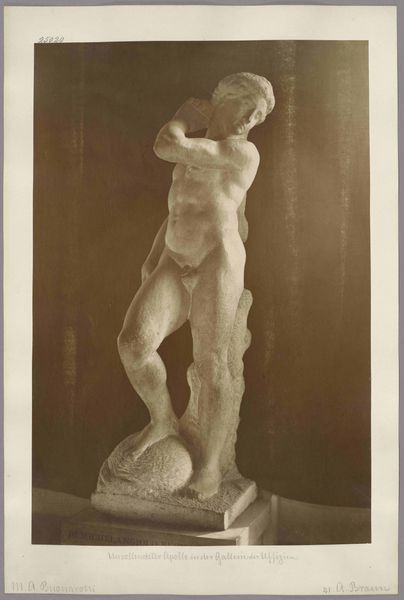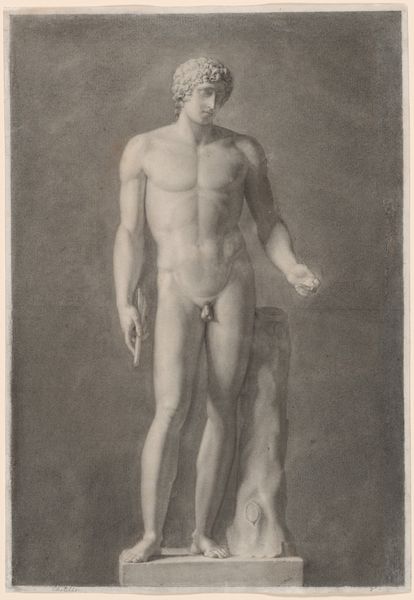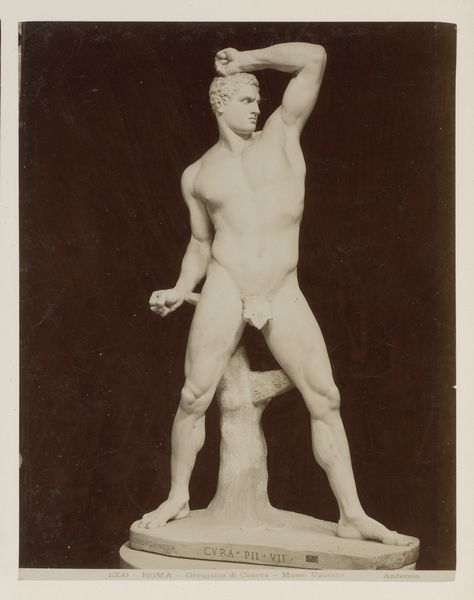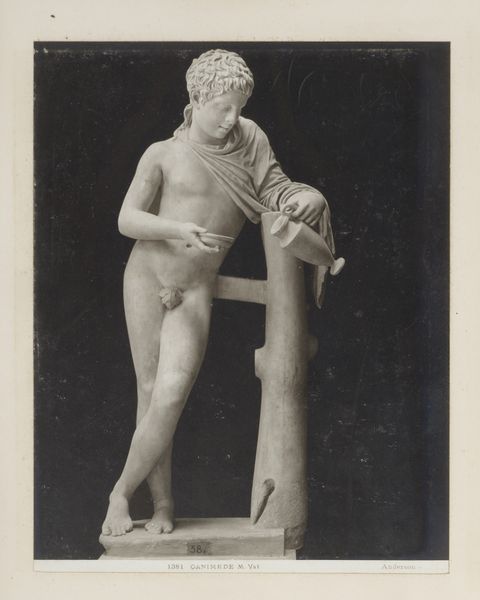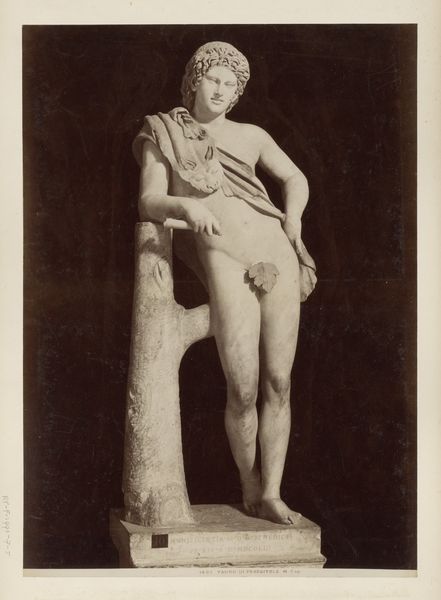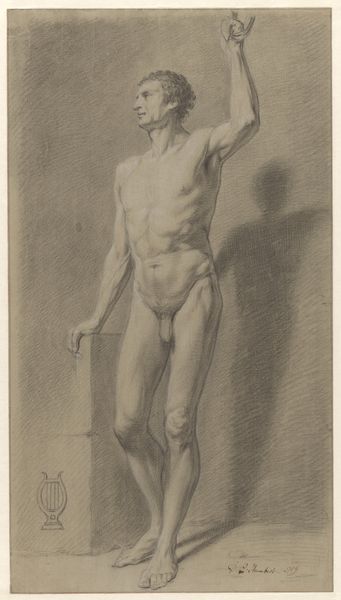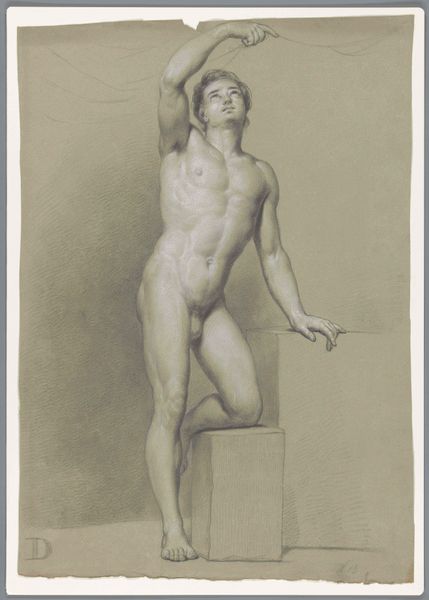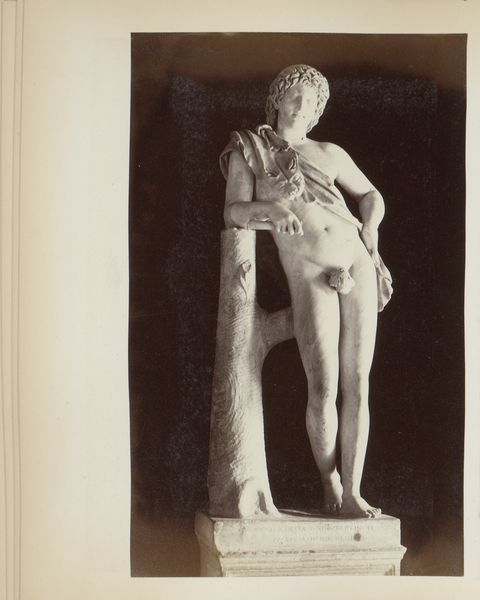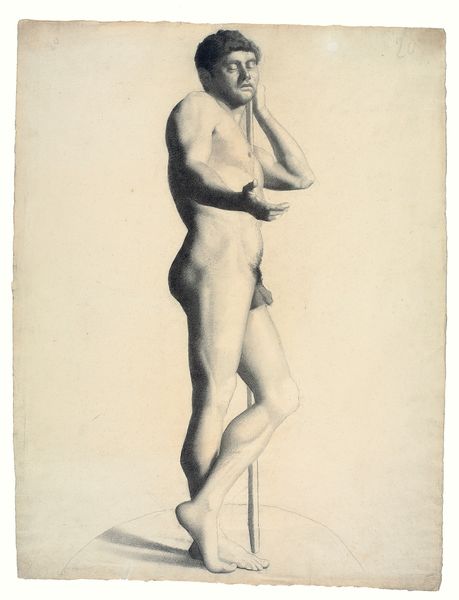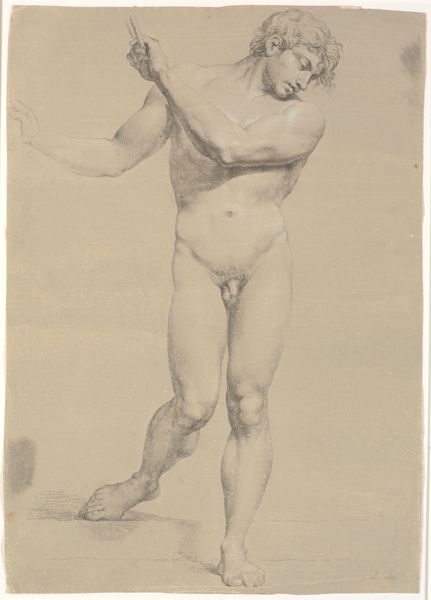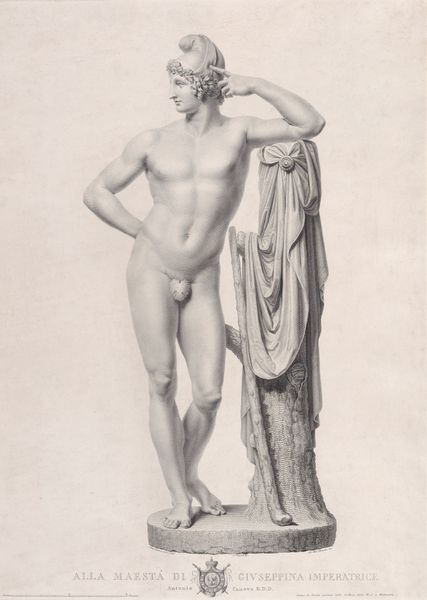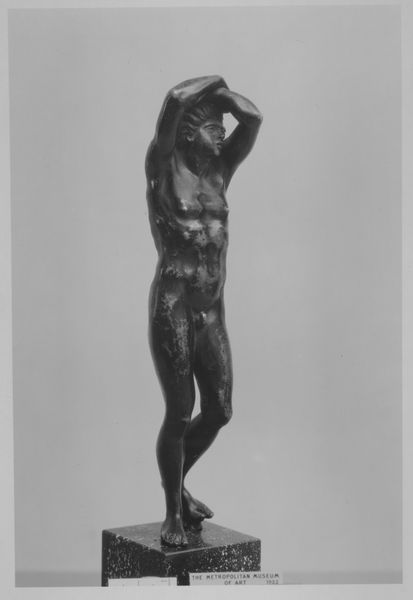![[Study of a Sculpture] by Eugène Druet](/_next/image?url=https%3A%2F%2Fd2w8kbdekdi1gv.cloudfront.net%2FeyJidWNrZXQiOiAiYXJ0ZXJhLWltYWdlcy1idWNrZXQiLCAia2V5IjogImFydHdvcmtzLzkzZTM3ODA5LWY0ZWYtNDZkYy1hNDc0LWY4M2ZmMzljNDAyYy85M2UzNzgwOS1mNGVmLTQ2ZGMtYTQ3NC1mODNmZjM5YzQwMmNfZnVsbC5qcGciLCAiZWRpdHMiOiB7InJlc2l6ZSI6IHsid2lkdGgiOiAxOTIwLCAiaGVpZ2h0IjogMTkyMCwgImZpdCI6ICJpbnNpZGUifX19&w=3840&q=75)
photography, sculpture, gelatin-silver-print
#
portrait
#
figure photograph
#
blurred
#
photography
#
ancient-mediterranean
#
sculpture
#
gelatin-silver-print
#
male-nude
#
realism
Dimensions: 39.7 x 29.8 cm (15 5/8 x 11 3/4 in.)
Copyright: Public Domain
Curator: Oh, this image, it has such a ghostly quality. Like a memory emerging from the shadows. Editor: It's a gelatin silver print made between 1898 and 1902, entitled "[Study of a Sculpture]" by Eugène Druet, and what you're reacting to is Druet’s particular photographic practice: documenting artworks, often ancient sculptures, intended not as art photography but more as…well, institutional record-keeping. Curator: But see, it transcends that, doesn’t it? The lighting, that almost velvety darkness… It breathes a kind of ephemeral life into this stone figure. I find myself almost feeling the cold marble of the statue while at the same time contemplating ideas of form and beauty and masculinity in ancient culture. Editor: It's true that Druet elevates the reproductive genre through meticulous craft. He makes us question the role of photography in shaping our perception of these sculptures, traditionally considered ‘high’ art. The very act of photographing them, and disseminating the image so widely, democratizes access but simultaneously alters its aura, doesn't it? Curator: Precisely! Photography capturing sculpture – it is like a copy of a copy – which could degrade into nothingness but can actually inspire new dimensions of that primary piece. It makes us consider, I think, the dialogue between originals and reproductions in constructing art history itself. Does art truly exist if no one can appreciate it? Does documentation increase this appreciation or cheapen the raw appeal? These are essential things for us, today, to grapple with in this digital world, you see? Editor: A crucial point indeed. And in the context of the Met, this work serves as a potent reminder of how collections are built, interpreted, and circulated. It prompts us to consider who gets to decide what is worth preserving and how those decisions shape cultural memory. Curator: Mmh, that is definitely important. The institutional power woven into art. But I keep circling back to the way Druet's captured light transforms inert stone. It's this tension between cold object and warm rendering that grabs me. Like he found a way to photograph the sculpture’s soul. Editor: Maybe that’s because photography in its early stages of development tried so hard to mimic art. I find it fascinating how something so deliberately produced can trigger such evocative feelings centuries later.
Comments
No comments
Be the first to comment and join the conversation on the ultimate creative platform.
